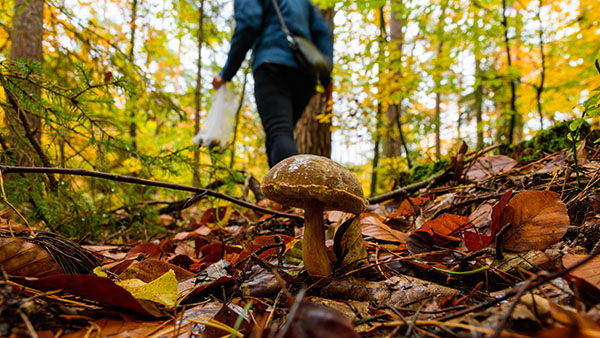
Preppers know that they shouldn't be complacent just because they have a sizeable survival stockpile. Before SHTF, you should also start a home garden, learn about food preservation techniques and know how to find and purify water.
These crucial skills will ensure that you can survive a long-term survival scenario if you run out of supplies or if your preps are unexpectedly damaged. (h/t to FoodStorageMoms.com)
Even if you're an experienced prepper, there's no telling when long-term man-made or natural disasters can last. Before SHTF, you should also plan what to do if you ever run out of food, water, or other supplies.
Start a home garden and grow your own food
Having a home garden ensures that even if your food stockpile runs out in a survival scenario, you have access to fresh, nutritious fruits and veggies right in your backyard.
Home gardening is a worthy prepper project but it's one with a steep learning curve. Follow the tips below if you're a gardening beginner.
Start small
First, learn a few gardening basics before investing most of your time and money. This will help you determine if you have the patience and self-discipline to maintain a garden when SHTF.
Keep things manageable by starting with a small garden. This ensures that you keep losses to a minimum and you don't get overwhelmed by having too many crops than you're prepared to handle
You'll also figure out how much food you need to grow to feed your whole family. A good size for a beginner’s vegetable garden is 6x6 feet.
Plant about five types of vegetables to grow, then plant a few of each type. This should give you enough fresh produce for your summer meals, while also giving you enough time to manage all the chores.
If you don't have enough space for a garden, try container gardening. All you need is a sunny deck or balcony.
Grow vegetables that your family likes to eat
Talk to your family and figure out what everyone likes to eat so you don't waste your resources on something they don't want to eat even after SHTF.
Do you plan on home canning excess produce? Or do you prefer eating fresh veggies? Be realistic about how many seeds or plants you need to put into the ground and don't plant too much.
Remember that vegetables like peppers, squash and tomatoes will keep providing throughout the season so you don't need too many plants. Meanwhile, other crops as carrots, corn and radishes can be harvested only once so they need to be replanted.
Pick the best spot for your garden
A vegetable garden has two requirements to succeed: sunlight and water.
- Sunlight – The fastest-growing vegetables need full sun, with at least six to eight hours of direct sunlight a day, without blockage from trees, shrubs, or fences. If your yard provides partial shade, grow crops that tolerate those conditions like chard, chives, cilantro, kale, lettuce, parsley, spinach and thyme. If your area only gets about four hours of direct sunlight a day, plant root vegetables like beets, carrots and radishes. Finally, if you have a sunny patio, grow sun-loving herbs and vegetables like basil, beans, cucumbers, dill, rosemary and tomatoes.
- Water access – The closer your garden is to a water source, the better. You'll need to be able to water frequently during the first few weeks after seeds germinate or seedlings are transplanted so fragile plants can produce strong roots and stems. After the plants are established, water your crops every few days instead of every day. To minimize water waste and the time you need to spend watering, install soaker hoses or drip irrigation on a timer.
Start plants in rich soil
To ensure a bountiful harvest, your vegetable garden needs to grow in quality soil.
Rich, healthy soil is easy to dig and drains well. The best kind of garden soil is dark, crumbly and full of life. If your soil has too much clay, sand, or silt, you can improve it by incorporating organic matter into it.

Learn about home canning methods like dehydration and home canning
Invest in home canning tools so you can use common techniques like dehydration, water bath and pressure canning to preserve your harvest and extend their shelf life. (Related: Food supply tips: Survival foods that will last longer as powder.)
Drying is the process of dehydrating foods and removing enough moisture to prevent microbial growth. When properly dried and properly stored, dehydrated foods are shelf-stable or safe for storage at room temperature.
Dehydration is easy, safe and can be used for most types of foods like meats, fruits and vegetables.
There are several methods for drying foods:
- Oven drying
- An electric dehydrator
- Air-drying (in the shade during warm weather)
- Sun-drying (limited to desert climates)
- Solar drying (requires a specially built dryer)
- Pit oven drying (useful when other methods are impractical)
Home canning is a preservation method wherein you apply heat to food in a closed-glass canning jar. This removes air from the jar to create a seal that stops the spoilage and makes food shelf-stable.
There are two home canning methods: Water bath canning and pressure canning.
Water bath canning is a faster, lower temperature preserving process used for high-acid foods. Food acidity is crucial for water bath canning.
The acidity kills bacteria that cause spoilage and botulism, a rare, but fatal disease spread by bacteria.
The following fruits and vegetables are perfect for water bath canning:
- Chutneys
- Condiments
- Fresh tomatoes (with added acid)
- Fruit juices
- Fruits
- Jams and jellies
- Pickles and relishes
- Salsas
- Vinegar
Pressure canning is best for low acid foods, meats and seafood. A pressure canner heats the contents of a jar to 240 F, effectively eliminating the risk of foodborne bacteria.
Foods that can be pressure canned include:
Learn how to find and sanitize water
When SHTF, you will need food and clean water to survive. If you lose access to clean, running water or if your water supply runs out, you need to know how to find and sanitize water.
Possible sources include rainwater, streams and rivers, ponds and lakes, and natural springs.
Water can be contaminated with different microorganisms like bacteria and parasites that might cause diseases like cholera, dysentery, hepatitis and typhoid.
Follow the steps below to treat water when SHTF:
- Filter – Filtering water with a cloth or a coffee filter will remove any solid particles.
- Boil – Bring the water to a rapid boil for a full minute. If you're at higher altitudes, boil water for three minutes to kill pathogenic bacteria, viruses and protozoa.
- Let the water cool – Let the boiled water cool for about 30 minutes before treating it with chlorine. Putting chlorine directly in hot water won't work.
- Chlorine – Once the water has cooled, add 16 drops of liquid chlorine per gallon of water. If you have a two-liter bottle, use eight drops of chlorine. Let the water sit for another 30 minutes after this step.
- Check the water –If the water smells a bit like chlorine, it's safe to drink. If it doesn't smell like chlorine, repeat step four. If the water still doesn't smell like chlorine, after repeating step four, look for another source of water.
Before SHTF, stockpile enough food and clean water to feed your family for a long-term disaster. Don't be complacent and start a home garden, learn how to preserve food, and find a backup source of clean water as well.
Sources include:
Please contact us for more information.
























